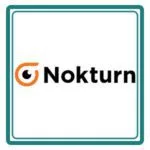SOC Reports for Security and Compliance: What They Are and Why They’re Essential

In our digital-first world, trust sits at the heart of every business tie. Whether you run a subscription software outfit, a fintech app, or a cloud toolkit, customers assume you will shield their information and act honestly. That expectation is why many firms turn to a SOC report-a third-party document that shows you meet top-tier standards for security, compliance, and day-to-day transparency.
In this post we’ll explain what SOC reports are, why they matter, and the steps your team can take to secure one. If boosting trust and easing compliance headaches is your goal, keep reading.What Is a SOC Report?
SOC stands for Service Organization Control, and a SOC report is an audit letter produced by an independent CPA firm. The report spells out how well your organization handles risks tied to data security, financial reporting, and other key operational controls.
SOC reports matter most for companies that store, process, or move sensitive customer data. So if your business serves finance, health care, cloud hosting, or software delivery, prospective clients will likely ask for your SOC findings before signing on the dotted line-and regulators may expect them too.
Types of SOC Reports: A Plain Take on SOC 1, SOC 2 and SOC 3
Most folks picture a single audit when they hear SOC, but there are actually three core versions and each serves a different purpose. The one you select depends on the kind of service you provide and the risks your industry cares about.
1. SOC 1 Report
- Key Focus: Controls over financial reporting, often called ICFR.
- Who Wants It: Usually the auditors sitting across the table from your clients.
- Typical Users: Payroll processors, bookkeeping software, outsourced HR teams.
- Type I vs Type II:
- Type I gives a snapshot on one day.
- Type II follows the controls across six to twelve months.
2. SOC 2 Report
- Key Focus: The five Trust Services Criteria:
- Security
- Availability
- Processing Integrity
- Confidentiality
- Privacy
- Who Wants It: Customers, business partners, and some watchdogs.
- Typical Users: SaaS companies, cloud hosts, colocation centers.
- Type I vs Type II:
- Type I checks if controls are designed on a specific date.
- Type II sees whether they actually worked over time.
3 SOC 3 Report
- Runs on the same framework as SOC 2 but is written for anyone, not just professionals.
- It strips out sensitive facts so nothing confidential leaks.
Because of that clean format, many firms use SOC 3 to market services and reassure the general public.
Types Of Certification
- ISO Certification
- ISO 9001 Certification
- ISO 14001 Certification
- ISO 45001 Certification
- ISO 22000 Certification
- ISO 27001 Certification
- ISO 17025 Certification
- ISO 13485 Certification
- ISO 20000-1 Certification
- ISO 22301 Certification
- ISO 50001 Certification
- ISO 37001 Certification
- IATF 16949 Certification
- ISO 29001 Certification
- ISO 31000 Certification
- ISO 20121 Certification
- ISO 10002 Certification
- ISO 41001 Certification
Get Free Consultation
Our Clients


















SOC 1 vs SOC 2: Which One Do You Need?
Choose SOC 1 if your work swings clients books and records, and pick SOC 2 when you guard customer data or keep cloud systems alive.
Feature | SOC 1 | SOC 2 |
Focus | Financial reporting controls | Information security controls |
Target Audience | Auditors, internal teams | Clients, partners, regulators |
Industries | Finance, payroll, HR services | SaaS, IT, cloud, BPO |
Report Types | Type I & Type II | Type I & Type II |
What Goes Into a SOC Report?
Many people think a SOC report is little more than a checkbox document, but that misses the real story. In fact, the report gives a clear snapshot of how controls run inside your company, from the network room to the finance desk. Here’s the usual set of building blocks you will find:
- Auditor's Opinion- an outside experts call on whether the design and day-to-day performance of controls holds water.
- Management Assertion- a signed note from your leaders saying the description of those controls is both true and complete.
- Control Objectives & Testing- a list of key goals, the tests the auditor ran, and the pass-or-fail score for each item.
- Complementary User Entity Controls (CUECs)- reminders of what your own team still needs to do so all those shared controls keep working.
Why SOC Reports Matter for Security and Compliance
In a world where hackers scan the web every minute, a clean SOC report does far more than polish your image-it acts as an early-line shield for the whole business. Here are the main reasons so many firms now treat it as a must-have instead of a nice-to-have.
- Trust Building- A current SOC 2 Type II seal shows customers you sweat the small stuff on data security. That alone can tip the scale when big clients compare bids.
-
Compliance and Risk Management-
the paperwork takes the sting out of:
vendor due-diligence sessions
third-party risk reviews, and
regulatory checks (HIPAA, GDPR, ISO and the rest). - Market Differentiation- SOC-branded firms usually rise to the front of the line in RFPs, partner talks, and joint ventures.
- Operational Improvements- An audit routinely uncovers hidden gaps or bottlenecks that you never noticed, and that insight becomes a map for building tighter, more reliable controls.
The SOC Report Certification Process-Step by Step
1. Readiness Assessment
Before anything hits the formal clock, a trusted guide like Popularcert reviews your processes, policies, and control papers. Gaps get spotlighted while correcting them is still quick and cheap.
2. Remediation & Improvement
You roll out fixes-whether tightening access rules, refreshing manuals, or spelling out incident playbooks-so your controls speak with one voice.
3. Independent Audit
Then a licensed CPA team steps in, running the full test. Here is where they size up the system under SOC Type I or Type II terms.
4. Report Issuance
When the fieldwork wraps, you get the signed SOC document, the badge you can show clients, partners, and auditors alike.
Common Myths About SOC Reports
Lets clear a few myths that still hang around:
Only large enterprises need SOC reports.
Wrong. Start-ups, scale-ups, and midsize firms often must flash a SOC badge to land big contracts.
SOC 2 and ISO 27001 are the same.
Not quite. Both aim at security, yet lean on different blueprints. SOC 2 lives in CPA hands, while ISO 27001 comes through the ISO accreditation door.
Once I see a SOC report, I’m off the hook.
Not quite. SOC reports lose their validity after twelve months, and you still need to watch your controls year-round.
How Popularcert Helps You with SOC Reports
If you work in fintech, healthcare, or any cloud vertical, missing a current SOC letter can hurt:
Lost enterprise deals
Failed vendor reviews
Heavier regulator questions
A hit to your brand
Many rivals already wave their SOC badge. The longer you delay, the bigger the trust divide grows.
Don't Wait: Why Delaying a SOC Report Can Be Costly
Yes, the road looks winding at first, but with the right guide it soon feels like a walk in the park. Popularcert sits by your side, turning every twist into a clear step and getting you audit-ready without the midnight oil.
Don’t let unanswered security questions or loose rules hold your company back. Move forward today and start building a business that partners and customers can lean on.
Curious about where to start? Reach out to Popularcert for friendly advice and a no-cost readiness check.
Conclusion
In the modern digital marketplace, trust acts like money, and a solid SOC report is one of the best ways to bank it. Whether you handle personal data, run cloud apps, or face new rules every quarter, such a report shows clients that you care about openness, responsibility, and real security.
You can lean on SOC 1 for finance teams, SOC 2 for privacy geeks, or SOC 3 when you want to shout your good practices from the rooftops; each one speaks the right language for every company. More than a compliance stamp, these reports help you fine-tune workflows, cut hidden threats, and win big contracts with nervous enterprise buyers.
Final Thoughts
Yes, the road looks winding at first, but with the right guide it soon feels like a walk in the park. Popularcert sits by your side, turning every twist into a clear step and getting you audit-ready without the midnight oil.
Don’t let unanswered security questions or loose rules hold your company back. Move forward today and start building a business that partners and customers can lean on.
Curious about where to start? Reach out to Popularcert for friendly advice and a no-cost readiness check.
GET A FREE CONSULTATION NOW
FAQs
What exactly is a SOC report and why would my business want one?
A SOC report shows that your firm has sound controls for protecting data and keeping systems secure. Clients, regulators, and partners often expect it before placing trust or signing contracts.
How are SOC 1, SOC 2, and SOC 3 reports different from one another?
SOC 1 looks at controls affecting financial reporting, SOC 2 reviews safeguards around data privacy and security, while SOC 3 distills SOC 2 findings into an easy-to-read public badge.
Which companies are required to obtain a SOC report?
Any vendor that processes, stores, or transmits sensitive customer information, such as SaaS platforms, cloud providers, or financial services, should plan on having a SOC report.
From start to finish, how long does it usually take to secure a SOC report?
The journey lasts 3 to 6 months, with timing influenced by your current controls, the chosen report type, and whether you need to fix gaps before testing.
Can Popularcert guide my business through the SOC process?
Absolutely, Popularcert provides hands-on coaching, documentation templates, and access to trusted auditors, making your SOC journey clearer and faster.
